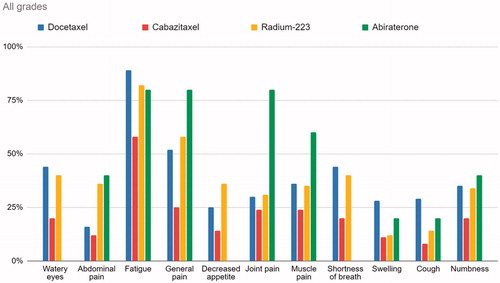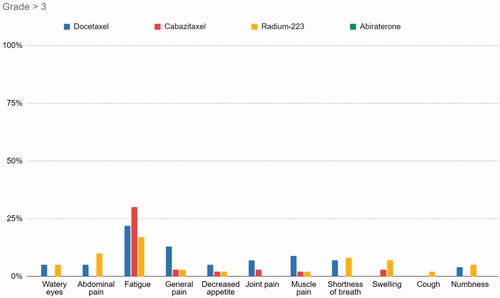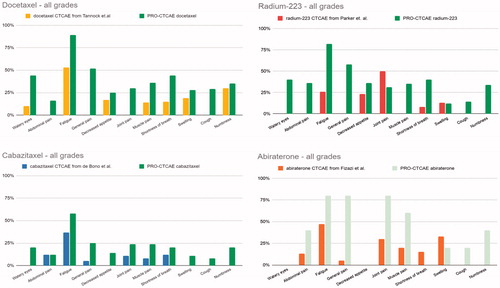Figures & data
Figure 1. Graph illustrating percentage of PRO-CTCAE responses >0 for the four treatments across symptoms interfering with usual activities.

Table 1. PRO-CTCAE attributes and item structures [Citation5,Citation50].
Figure 2. Graph illustrating percentage of PRO-CTCAE responses grade 3 or above, for the four treatments across symptoms interfering with usual activities.

Figure 3. Top left shows percentage of patients receiving docetaxel with CTCAE score >0 published by Tannock et al. and percentage of patient responses with PRO-CTCAE score >0 (green columns) from our dataset. Top right shows percentage of patients receiving radium-223 with CTCAE score >0 published by Parker et al. and percentage of patient responses with PRO-CTCAE score >0 (green columns) from our dataset. Bottom left shows percentage of patients receiving cabazitaxel with CTCAE score >0 published by Bono et al. and percentage of patient responses with PRO-CTCAE score >0 (green columns) from our dataset. Bottom right graph shows percentage of patients receiving abiraterone with CTCAE score >0 published by Fizazi et al. (light green columns represents our PRO-CTCAE responses but are based on only 5 responses by two patients).

Table 2. Comparing percentage of PRO-CTCAE responses interfering with usual or daily activities, and matching CTCAE reported by registration studies.
